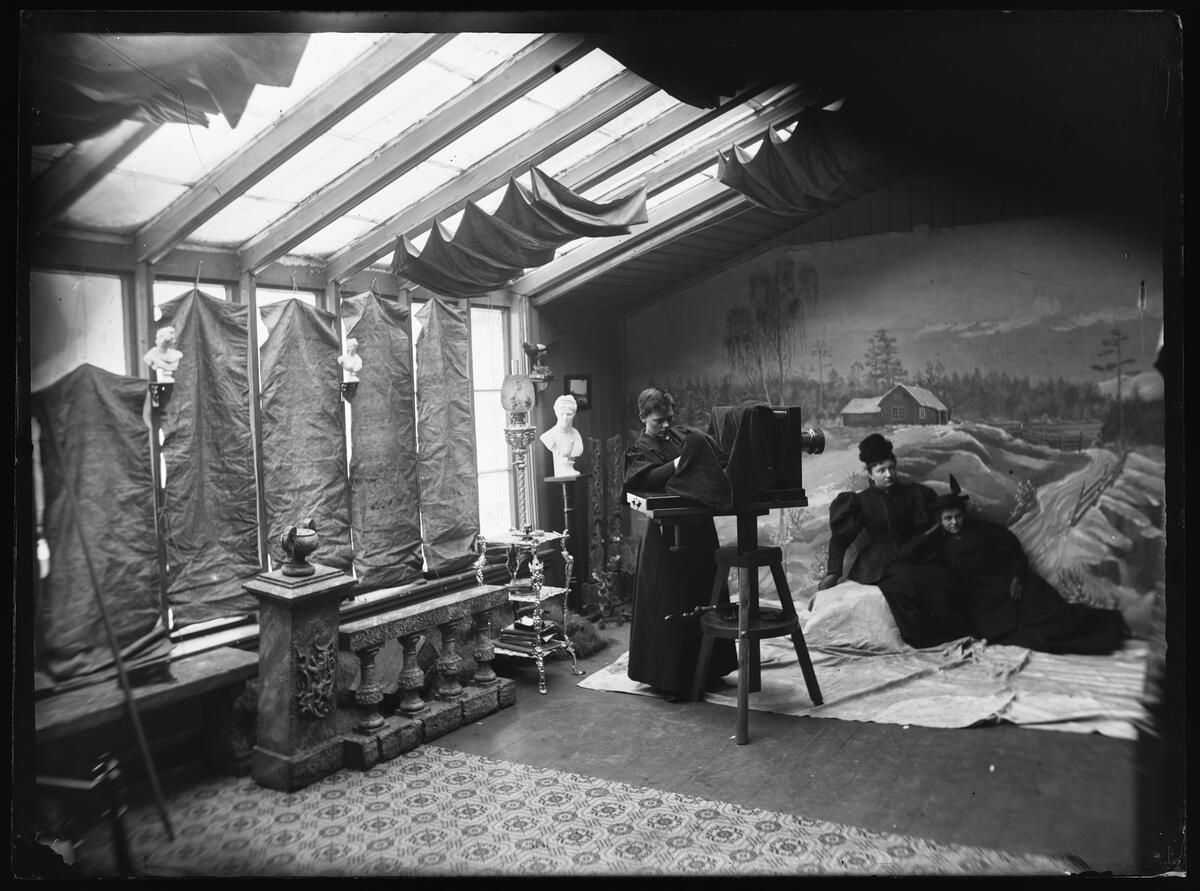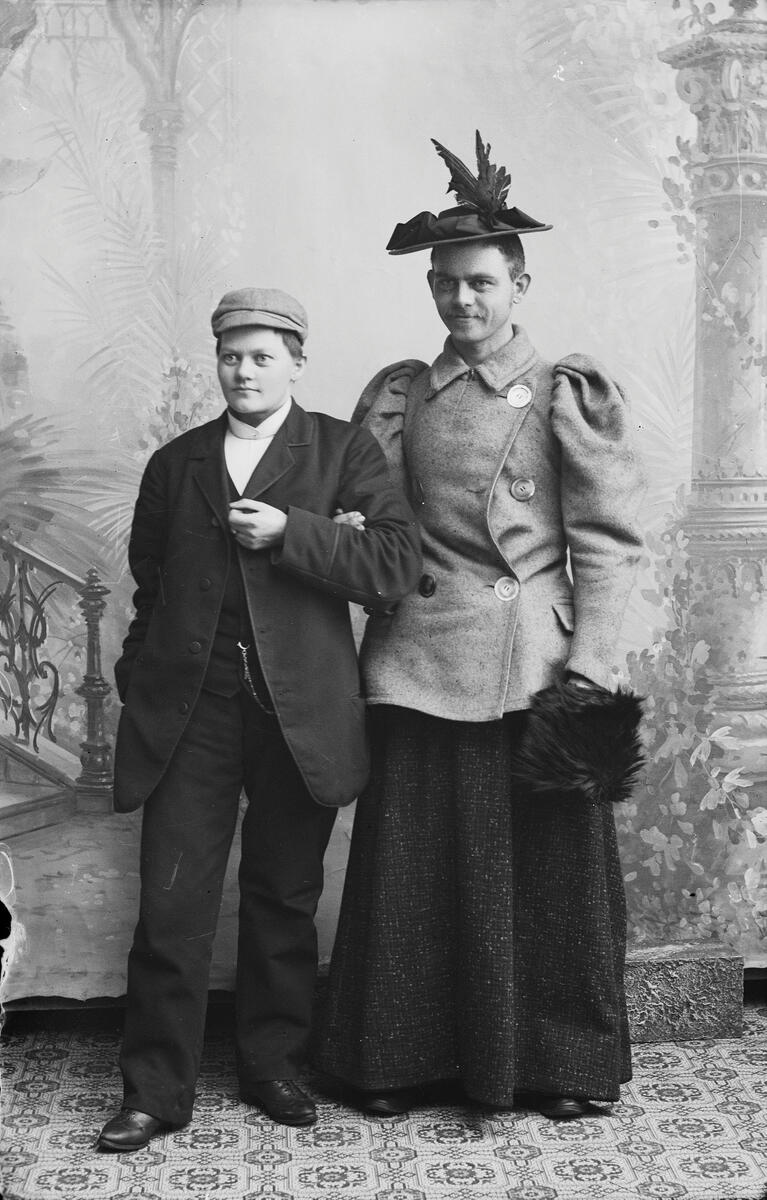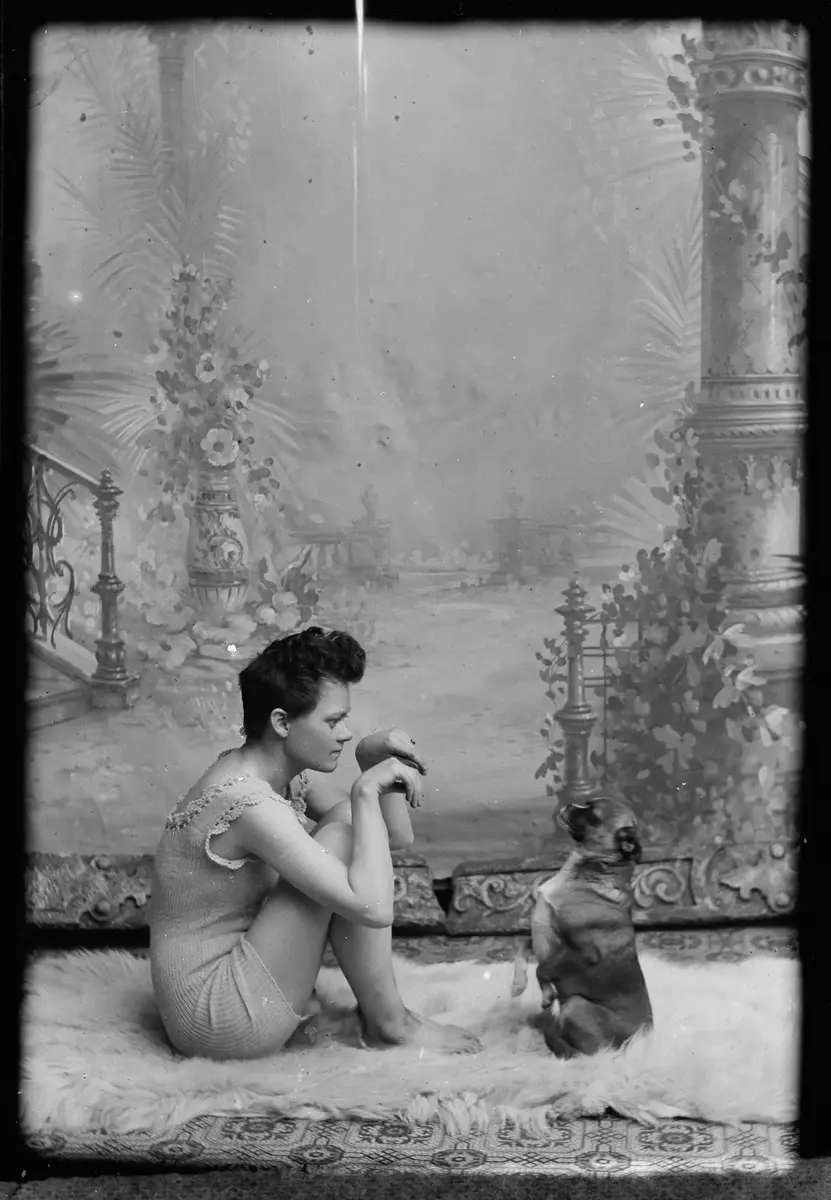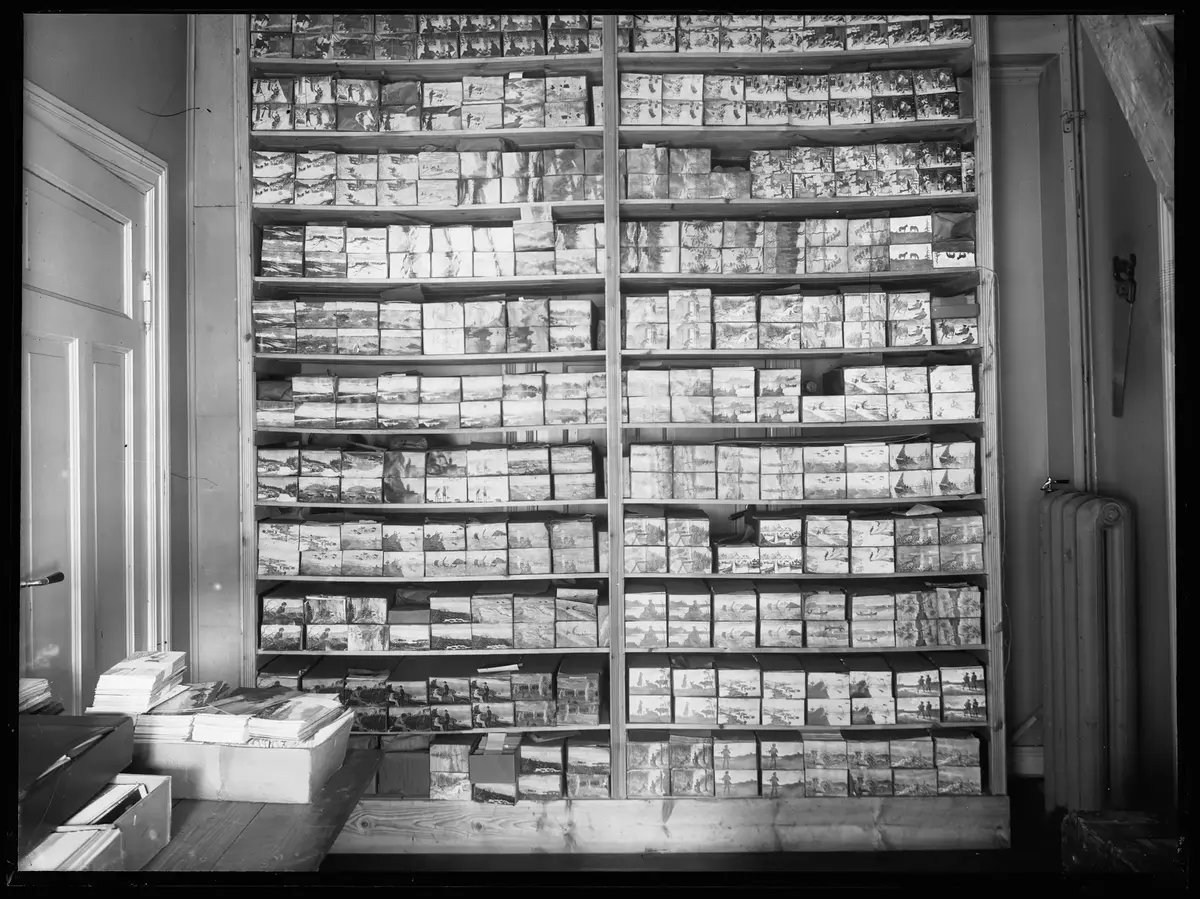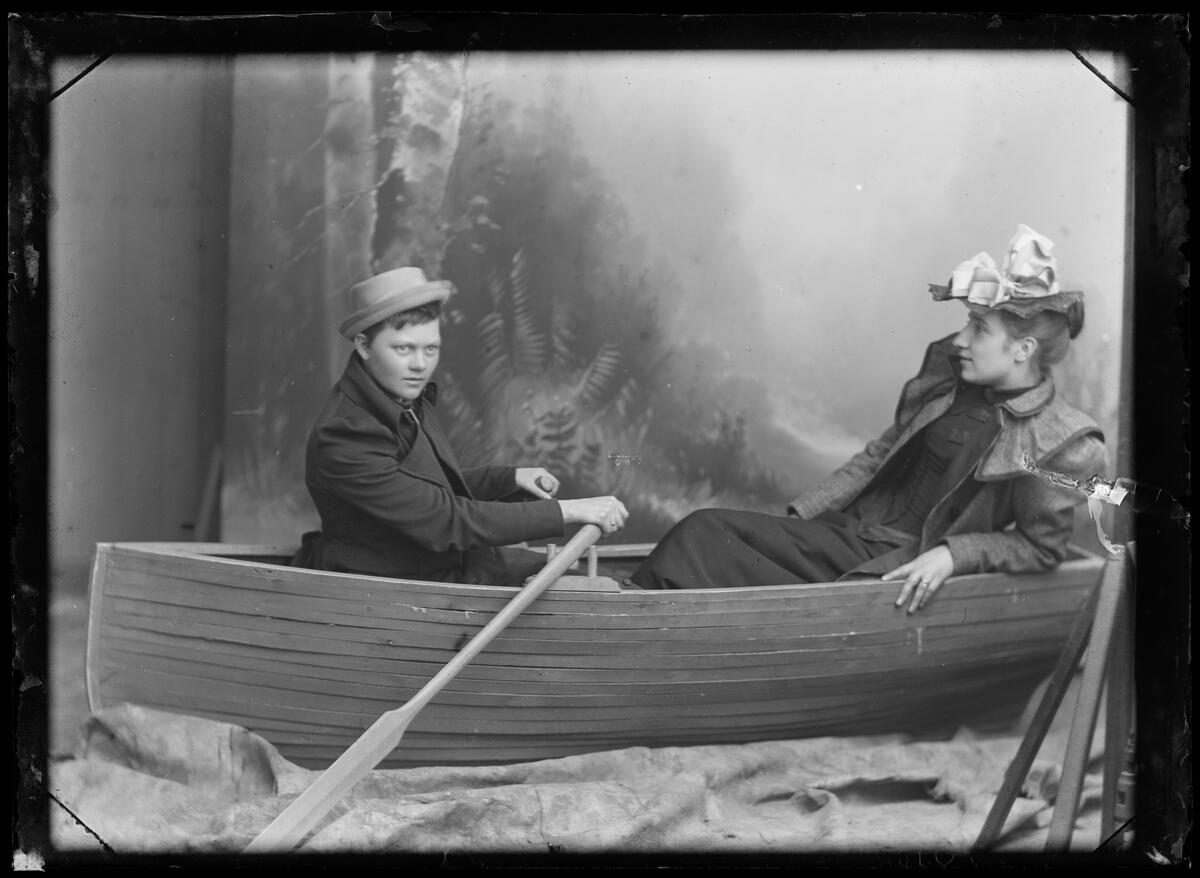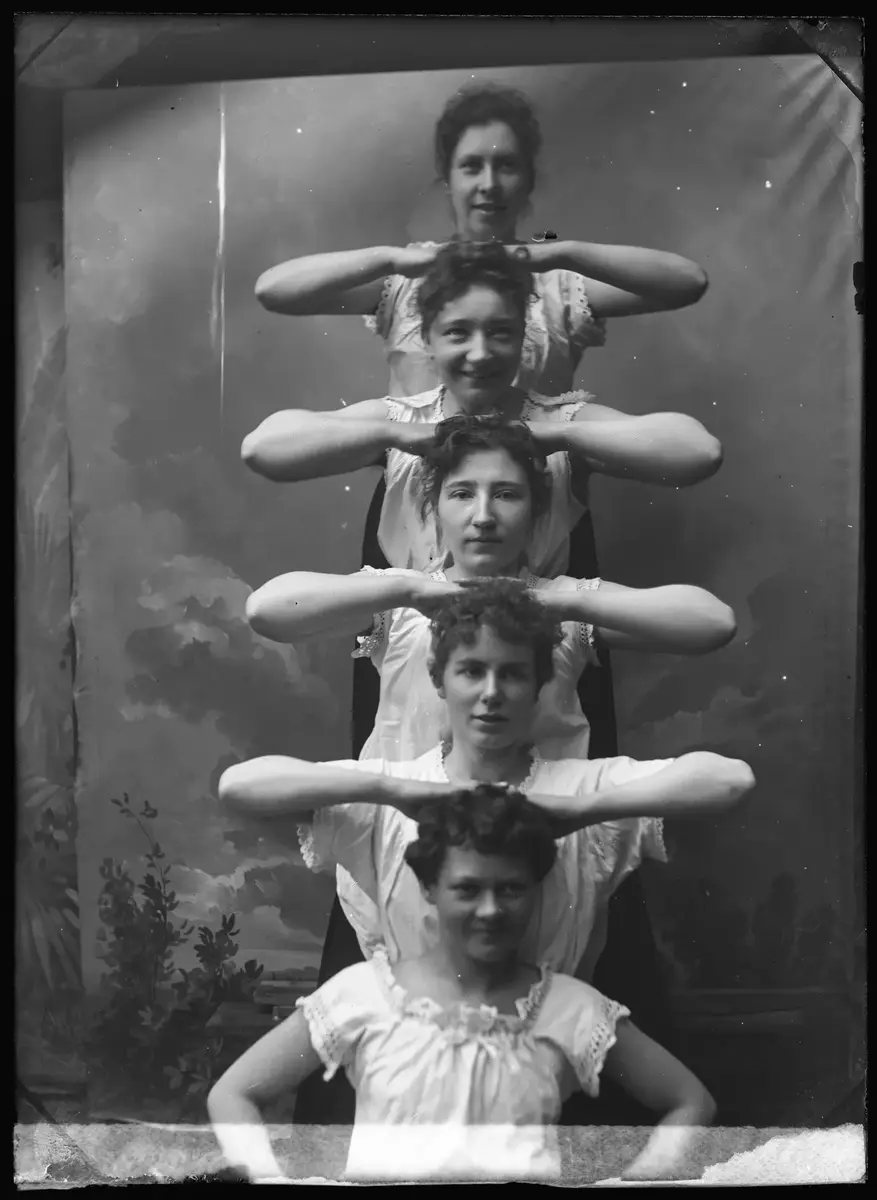- 1/1
Berg & Høeg, Bolette Berg with a mustache, 1894-1903. Collection of Preus Museum
Marie and Bolette were active as photographers in the town of Horten in the south of Norway from 1894 to 1903, after when they moved to Oslo and started a publishing company. The couple worked and lived together their whole adult lives and they were deeply engaged in the fight for women’s rights. Marie was particularly visible, locally but also nationally. As was said about her during her lifetime: – She came like a whirlwind and woke up the sleepy Horten!
- 1/1
Berg & Høeg, Marie Høeg with brother Karl, crossdressing, 1894-1903. Collection of Preus Museum
In the 1970s, some negatives from their estate came up for auction, and were acquired by Preus Museum. Among the boxes containing glass negatives of landscapes and reproduction of artworks, two boxes marked “Private” were found. Inside were the glass negatives displaying Marie, Bolette, their siblings and friends staging themselves in front of the camera, challenging nineteenth-century ideals of womanhood and the stereotypical gender roles of the era. Seen in contrast to their day-job portraits of the time, their private photographs are lively and humorous and still today a quite unexpected sight.
Berg & Høeg’s private photographs have by time resonated internationally and have been adopted by a large queer community. The selection displayed at PHotoESPAÑA includes some newfound pictures never shown earlier outside of Norway.
- 1/1
Berg & Høeg, [Marie and the dog Tuss], 1895–1903. Digitized from glass negative. Preus Museum collection.
Photographers and business partners
Marie and Bolette met in Finland where Marie, already a photographer, managed two photographic ateliers and Bolette made her education as photographer. In the late 19th century, photography was one of few occupations that were regarded as respectable for women. In 1894, they founded the photography studio “Berg & Høeg” in Horten, where they took quite conventional portraits of the citizens as well as landscapes, that they later published as postcards.
As skilled businesswomen they saw the possibility in the blossoming market for postcards, and their publishing company specialized in all types of such cards, as well as books. One of their fields of interest were postcards displaying the modern artworks of Norwegian painters, foremost the female ones, to an audience abroad.
- 1/1
Berg & Høeg, The postcard production of Marie Høeg and Bolette Berg, 1894–1903. Collection of Preus Museum
Activists and lovers
Marie and Bolette were very active in the struggle for equality for women and women’s suffrage. At the time, politics was an arena unavailable for women and they had to meet in secret if they were committed to political causes. Marie founded a secret discussion society for women where they could practise discussing politics. At the time, it was not unusual for women to live together in unromantic relationships, as it was convenient and economic for single women to join households. But for Marie and Bolette, it was more than that, as also family members of the two have confirmed. They were lovers and business-partners for the rest of their lives since they met in Finland as young women.
- 1/1
Berg & Høeg, "Water scene". Marie Høeg and Bolette Berg in a rowing boat in the studio, 1894-1903. Collection of Preus Museum
What’s normal?
The private images were not originally meant for the public eye, as they would have been considered rather challenging at the time. Today we see them as playful and innocent more than anything else, which reminds us that boundaries change with time. The continued interest in the photographs shows us that what is considered “normal” or within the norms of a society, changes depending on context. At the same time. we should not forget that in some parts of the world, these pictures could still stir up controversy.
Preus Museum, the National Museum of Photography in Norway, manages the legacy of Marie Høeg and Bolette Berg, and has the original glass negatives in its collection. All images on show are digital reproductions of the original glass plates. Some of the plates have cracks and damages, left visible in the reproductions. The institution is immensely proud of the two enterprising ladies whose pictures travel worldwide, telling the story of female love, emancipation, and joy.
- 1/1
Berg & Høeg, Having fun in the studio. From bottom and up: Marie Høeg, Trine Ulrichsen, Bolette Berg, Bolette's sister Ingeborg and Julie Anthonsen, 1894-1903. Collection of Preus Museum
Read more about the exhibition in Madrid
